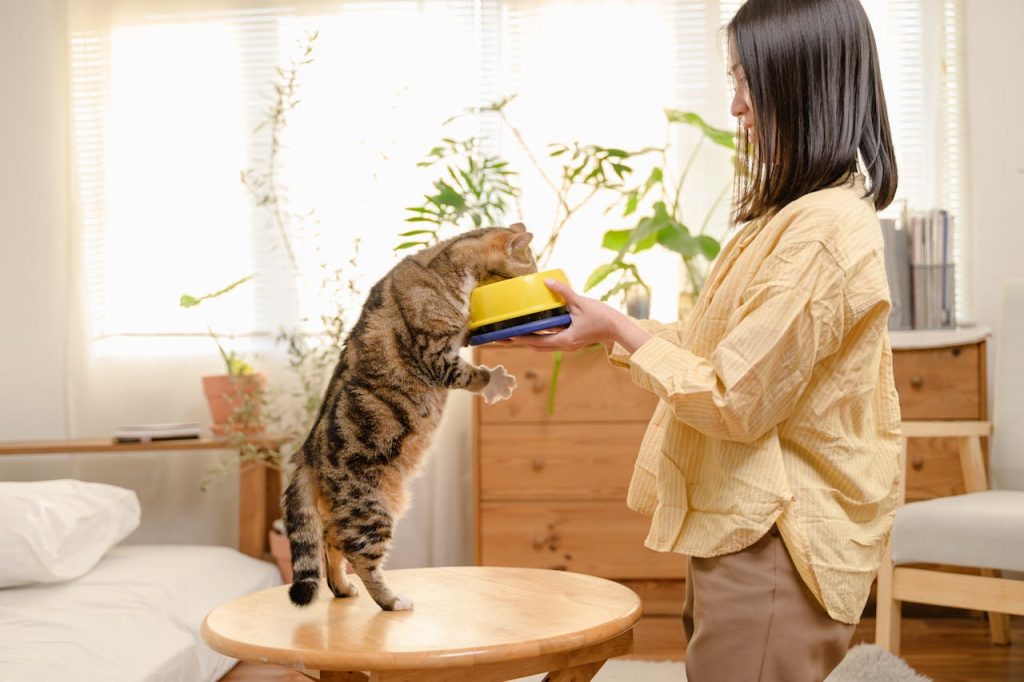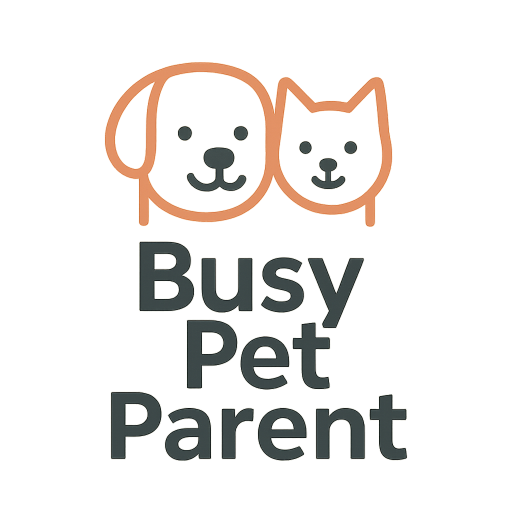
10 Brilliant Pet Meal Prep Tips for Busy Apartment Owners
If you’ve ever rushed out the door with an empty food bowl staring back at you, pet meal prep is about to become your new best friend. By spending a single afternoon portioning, labeling, and organizing your pet’s meals, you’ll save hours of stress throughout the week—and keep your dog or cat on a healthy, predictable feeding schedule. Apartment life makes organization even more important, since space is limited and clutter piles up fast.
In this guide, you’ll learn how to master pet meal prep like a pro: portioning meals safely, storing them in minimal space, freezing fresh treats, and using smart feeders to stay on schedule. You’ll even see how batch prepping can save money on food waste and vet bills. Let’s make feeding your pet as easy as grabbing your own lunch from the fridge.
1. Start with One Weekly Prep Session
The easiest way to make pet meal prep stick is to keep it simple: choose one day a week to handle food, treats, and storage. Whether that’s Sunday after brunch or Wednesday night after work, consistency builds routine. Set out clean containers, scoops, and a clear workspace. Measure out dry kibble or freeze single-serve portions of homemade food so that every meal is ready to go when you need it.
This approach isn’t just about convenience—it’s about stability. Pets thrive on predictable feeding times, and when their meals are prepped ahead, they’re less likely to beg or whine off-schedule. Busy owners benefit, too: less time spent cleaning up, fewer forgotten feedings, and more confidence in maintaining nutrition balance. For even smoother mornings, build this prep session into your pet routine checklist so it becomes part of your normal weekly rhythm.
And if you want to add variety without extra work, freeze a few small treat batches using safe, simple recipes like these homemade dog treats. They thaw quickly and make enrichment or training easier throughout the week—without adding prep time.
2. Portion with Precision to Prevent Overfeeding
One of the biggest advantages of pet meal prep is accuracy. When you scoop on the fly, it’s easy to eyeball a little too much—especially with distracted mornings or late-night feedings. Measuring exact portions in advance keeps calories consistent and supports healthy weight management. Use a digital kitchen scale for wet or homemade foods and a measuring cup for kibble. Label each container with the meal type, date, and portion size so there’s no confusion when multiple people share feeding duties.
Apartment living adds another benefit: pre-measured portions keep bulk bags and cans off the floor, freeing up storage space. Store a week’s worth in sealed containers or reusable pouches, then refill from a master bag kept in an airtight bin to prevent odor and pests. For easy organization, repurpose small jars or leftover containers—see our guide on repurposing household items for pet care for creative, renter-friendly storage hacks.
If your pet eats multiple small meals, color-code lids or add stickers so you can grab the right serving instantly. This keeps your feeding routine efficient and clutter-free—even in the tiniest kitchen.
3. Choose the Right Containers for Freshness and Space
Smart storage is the backbone of successful pet meal prep. In apartments, every inch counts—so use stackable, airtight containers that maximize vertical shelf or fridge space. Clear containers let you see what’s left at a glance and help you rotate older portions first. Silicone freezer trays or small glass jars are perfect for fresh toppers like boiled chicken, veggies, or bone broth cubes. Always cool cooked foods before sealing to prevent condensation and spoilage.
Consider keeping a small “feeding station” shelf where you store pre-measured containers, a scoop, and a towel for spills. Label it clearly so pet sitters or partners can follow your routine with ease. For tech-savvy owners, an automatic feeder is a worthwhile investment—especially for long workdays. The Wirecutter guide to automatic feeders reviews reliable models that portion food precisely and keep pets on schedule, even if you’re running late.
Keep in mind that cats prefer multiple small meals, while dogs usually thrive on one to two predictable servings. A consistent, clutter-free setup will simplify both schedules.
4. Prep Fresh Ingredients Safely for a Whole Week
When preparing homemade meals or toppers, safety and freshness are everything. Wash your hands, bowls, and utensils thoroughly before starting. Separate raw meat, produce, and finished food to avoid cross-contamination. Chop ingredients into bite-sized pieces, cook proteins fully, and cool them before dividing into containers. Each portion should be sealed and labeled with a date; store 2–3 days’ worth in the fridge and freeze the rest.
If freezer space is tight, use flat-lay bags stacked upright in a small basket—this method saves valuable apartment freezer room. When thawing, move a portion to the fridge the night before to keep temperatures safe. To add variety, rotate seasonal ingredients like pumpkin, spinach, or carrots. Budget-minded owners can stretch savings further by reviewing our budget pet food tips for cost-effective, healthy options that store well.
For treats, freeze small batches using silicone molds or mini muffin trays; they thaw fast and reduce waste. Remember, quality containers and clear labeling are what make pet meal prep truly stress-free.
5. Label Everything Clearly (Dates, Portions, and Pets)
Clear labeling is what separates efficient pet meal prep from a guessing game. Write the portion size, date, and even your pet’s name on every container—especially useful if you share a home with multiple animals or a partner who helps feed. Color-coded lids or simple masking-tape labels make it obvious what’s for breakfast versus dinner, and what’s safe to thaw next.
Rotate older portions forward and keep a tiny “first in, first out” rule so nothing spoils in the back of the fridge. Apartment fridges are small, so a single clear bin labeled “Pet Meals – Week Of [Date]” keeps clutter contained and avoids food mixing. You can even set a recurring reminder on your phone to check freshness every three days—fast, simple, and stress-free.
This little system eliminates confusion, saves money on wasted food, and ensures your dog or cat never misses a meal. Combine it with the portioning strategies above, and you’ll feel like you hired an invisible helper for your kitchen.
6. Make a Dedicated “Meal Prep Zone” in Your Apartment
Even the smallest kitchen can fit a compact pet meal prep area. Dedicate a single shelf, rolling cart, or countertop corner to your prep tools—containers, scoops, labels, and wipes—so you’re not searching for supplies every week. Keeping everything together speeds up the process and prevents mixing pet gear with human cookware.
For owners working with tight storage, vertical organization is key. Use stacking bins, magnetic shelves, or wall-mounted racks to hold gear neatly. Silicone mats protect counters from spills and make cleanup fast. Some pet parents even install a small under-sink bin for dry food and a shallow drawer insert for treats and toppers. You can adapt ideas from our smart pet budgeting guide to repurpose inexpensive organizers instead of buying new.
Streamlining your space doesn’t just look better—it keeps your home more sanitary and makes you more likely to stick to your prep schedule. When it’s easy to start, you actually do it.
7. Automate Feeding When You Can
Smart feeders have become game-changers for busy pet parents. They pair perfectly with pet meal prep because you can load pre-measured portions once and let technology handle timing. Automatic feeders release food at consistent intervals—ideal for cats who graze or dogs who need controlled portions while you’re away at work.
Choose a reliable, easy-to-clean model with secure lids and portion control. The best automatic feeders make it simple to balance nutrition and routine without constant supervision. Set reminders in your phone to refill on the same day each week so your schedule stays synced.
Automation doesn’t replace connection—it just protects your consistency. You’ll still have mealtime moments together, but without the chaos of unpredictable feeding times. Combine smart tech with manual prep for the perfect low-stress system.
8. Freeze and Rotate Meals Like a Pro
Freezing is the secret weapon of pet meal prep. When done correctly, it extends freshness, reduces waste, and gives you a full week—or even a month—of ready-to-go meals. Use freezer-safe containers, silicone trays, or labeled zip bags laid flat to save precious space. Once frozen, stand the portions upright in a bin labeled by week. This makes meal rotation easy and keeps the oldest food at the front where you’ll grab it first.
Defrost meals slowly in the fridge the night before feeding. Avoid microwaving raw or mixed ingredients since heat can destroy nutrients unevenly. For an extra layer of convenience, use a second color of container for frozen portions versus fridge-ready ones—visual cues keep the system simple. With this method, you’ll save hours of kitchen time while ensuring your pet always gets safe, fresh food.
For bonus inspiration, check out the budget-friendly pet care tips that help stretch your prep supplies and ingredients even further.
9. Mix Enrichment Into Mealtime
Pet meal prep doesn’t have to be boring. You can easily turn feeding into fun by portioning meals into enrichment toys or puzzle feeders. Divide the week’s meals into smaller portions for use in snuffle mats, slow feeders, or treat-dispensing balls. It encourages natural foraging behaviors, slows down fast eaters, and keeps apartment pets mentally stimulated.
For example, half of Monday’s kibble can go into a puzzle bowl while the rest is served in a dish. The variety makes eating more exciting and reduces boredom-related mischief. These small changes are especially powerful for indoor cats and dogs who spend much of their day alone. Just remember to count enrichment snacks toward the day’s calorie total to keep things balanced.
Need ideas for enrichment gear? Our repurposed pet supply guide shows how to transform household items into engaging feeding toys that cost next to nothing.
10. Track Results and Adjust for Health and Budget
Every pet is unique, so monitor how your pet meal prep plan affects both your pet’s energy and your wallet. Track feeding habits, weight, and appetite changes over time. If your pet seems hungrier or sluggish, review portion sizes with your vet. For budget-minded owners, note how much you save by buying ingredients in bulk and avoiding last-minute takeout-style pet meals or overpriced toppers.
A simple notebook, spreadsheet, or feeding app can help you spot patterns and make smart adjustments. This long-term awareness supports health, minimizes waste, and gives you peace of mind. It also helps keep apartment life predictable—no emergency grocery runs, no forgotten feedings, no guilt.
For a complete breakdown of balancing nutrition and finances, visit our pet budgeting guide. You’ll see how smart prepping fits into a sustainable, low-stress lifestyle for both you and your pets.
Final Thoughts
Pet meal prep is one of the simplest ways to make your apartment routine easier, cleaner, and healthier. With a single weekly session, you can portion meals, freeze treats, and store everything neatly—freeing up time for play, walks, or quiet evenings. Whether you rely on airtight containers or smart feeders, consistency is what keeps both pets and owners calm. The result? Fewer dishes, less stress, and a happier pet who always eats on time.
Meal prepping isn’t about perfection—it’s about planning with love. Start small, refine as you go, and soon your kitchen will run like clockwork, even in the smallest apartment.
Frequently Asked Questions
How long does pet meal prep last in the fridge or freezer?
Refrigerated pet meals usually last 2–3 days, while frozen portions can last up to three months when sealed airtight. Always label and date containers and thaw portions in the fridge overnight for safe serving.
Is meal prepping safe for both dogs and cats?
Yes. As long as you store food safely, follow vet-approved recipes, and monitor ingredients, pet meal prep works beautifully for both species. Just remember cats need higher protein and fewer carbs than dogs.
What are the best containers for apartment pet meal prep?
Stackable glass jars, silicone freezer trays, or BPA-free plastic tubs work best. Label them clearly with the date and portion size. They’re compact, reusable, and perfect for small apartment kitchens.
Can I use an automatic feeder with homemade food?
Only if the texture fits. Most smart feeders are designed for dry or semi-moist foods. For wet meals, pre-portion and refrigerate instead. Check the NYT Wirecutter guide for models that suit your feeding style.
How does pet meal prep help with budgeting?
Prepping meals in bulk reduces waste, limits impulse purchases, and helps you buy in larger quantities for better value. It also keeps feeding predictable, preventing overfeeding and expensive health issues later.

Join the Busy Pet Parent Newsletter!
Get easy routines, time-saving tips, and the latest gear reviews—delivered straight to your inbox.
Perfect for busy pet owners, apartment dwellers, and anyone who wants a happy, healthy companion (without the stress).
Exclusive guides & checklists
Product recommendations & deals
No spam—unsubscribe anytime!




